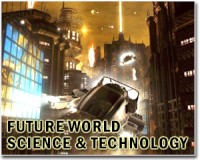 |
Yokohama, Japan (AFP) Nov 11, 2010 As it hosts an Asia-Pacific summit, Japan is showing off robots, green cars and space probes to prove its high-tech credentials despite slow growth and threats to crucial rare earth supplies. Visitors to the "Japan Experience -- Ideas Into Reality", an exhibit on the sidelines of the Asia Pacific Economic Cooperation (APEC) summit, are greeted by a robot modelled on a young woman, the Cybernetic Human HRP-4C Miim. "Welcome to the Japan Experience," says the 158-centimetre (five foot two) humanoid. "This exhibition shows Japan's strengths," she adds in a halting voice -- moving as if to flex her muscles for emphasis -- "and attractions". "Please see, touch and feel advanced technologies and innovations of Japan." The show put on for leaders, ministers and officials, also features a robot that can ride a unicycle, the wearable power-enhancing Cyberdyne robo-suit, and a fluffy robotic baby seal that comforts elderly hospital patients. Other tech marvels include a plug-in hybrid car to help save the planet, a robo-submarine to explore its ocean depths, and a replica of the asteroid explorer Hayabusa that just returned from a seven-year deep space voyage. Other innovations include an indoor vegetable farm for city use that employs solar powered LED lights, Japan's next-generation supercomputer, a landmine clearance robot, 3D televisions, and images of Shinkansen and maglev trains. Japan is eager to show that -- despite two decades of stagnant growth, a fast-greying population and stiff competition from industrial rivals China and South Korea -- it still has what it takes to be a global high-tech leader. But many worry that the export giant peaked in the early 1990s and is losing its innovative edge and economic heft, a perception reinforced this week as South Korea spares no expense to host a lavish Group of 20 summit. A more immediate fear is that Japan is being starved of key mineral ingredients used in many of the products on show -- rare earth metals that are essential for goods like electric car batteries, flat-screen TVs and missiles. China, which produces more than 95 percent of rare earths, has choked off exports to Japan since September, traders say, amid the worst diplomatic spat between the Asian giants in years, sparked by a territorial dispute. "I hope everyone will share rare earth minerals in a friendly manner," said Toyota Motor official Makoto Morita as he showed off the automaker's i-Real personal mobility device, which he said couldn't be made without the commodities. "Rare earth minerals are used in lithium batteries and in the motors," he said, pointing at the quietly humming electric three-wheeler that allows people to zip around in a standing position, without carbon emissions. Morita said rare earth supplies need to be shared, to make environmental technology that will be of global benefit. "If a majority of people, including the Chinese, don't use these energy efficient devices, the environment won't improve very much," he said. Meanwhile, Dowa Eco-Systems showed off another innovation that it started years ago, but which has drawn more attention in recent weeks, as Japan's tech sector has stared at the threat of running out of rare earths. The firm has found a way to extract 19 metal elements as "e-scraps" from the millions of cellphones, PCs, handheld gizmos and electronic devices that Japanese throw away every year. It calls the recycling system "urban mining".
Share This Article With Planet Earth
Related Links Space Tourism, Space Transport and Space Exploration News
 China leads Asian thrust in research: UN
China leads Asian thrust in research: UNParis (AFP) Nov 10, 2010 Asia, led by China, is fast challenging America, Europe and Japan in spending on scientific research and development but still lags on key criteria of inventiveness, according to a UN report to be published on Wednesday. In its first review of world science budgets in five years, the UN Educational, Scientific and Cultural Organisation (UNESCO) found Asia accounted for 32 percent of gross do ... read more |
|
| The content herein, unless otherwise known to be public domain, are Copyright 1995-2010 - SpaceDaily. AFP and UPI Wire Stories are copyright Agence France-Presse and United Press International. ESA Portal Reports are copyright European Space Agency. All NASA sourced material is public domain. Additional copyrights may apply in whole or part to other bona fide parties. Advertising does not imply endorsement,agreement or approval of any opinions, statements or information provided by SpaceDaily on any Web page published or hosted by SpaceDaily. Privacy Statement |